Is the PSVR2 Worth It?
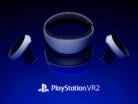
Is the PSVR2 Worth It?
“Is the PSVR2 worth it?” and “Is the PSVR2 any good?” are some of the pressing questions echoed in the PlayStation and VR gaming community. Despite carrying a price tag that surpasses the PS5, the PSVR2 selling well since its debut in February 2023 indicates a high demand for its premium VR experience. In this article, we discuss the PSVR2’s specs and features to assess its value.
| PSVR2 Headset | |
|---|---|
| Display method: | OLED |
| Panel resolution: | 2000 x 2040 per eye |
| Panel refresh rate: | 90Hz, 120Hz |
| Lens separation: | Adjustable |
| Field of View: | Approx. 110 degrees |
| Sensors: | Motion sensor: Six-axis motion sensing system (three-axis gyroscope, three-axis accelerometer)Attachment sensor: IR proximity sensor |
| Cameras: | 4 embedded cameras for headset and controller trackingIR camera for eye tracking per eye |
| Feedback: | Vibration on headset |
| Communication with PS5: | USB Type-C® |
| Audio: | Input: Built-in microphoneOutput: Stereo headphone jack |
PSVR2 Design Evolution
Sony’s PSVR2 is all about giving you a great gaming experience. While it has some looks from the original PSVR, there’re several modifications aimed at making your VR experience even better.
To tailor the fit for every individual, the headset is equipped with adjustable headband arms and a small wheel at the rear to tighten or loosen the strap. The wired earbuds plug in neatly into the audio jack on the headset. If hooking up systems with multiple cables is not your thing, you would be happy to know that with the PSVR2, you’ll only have to connect one USB Type-C cable to the front of your PS5.
Where your head rests against the headband, there is a rubberized cushion on the front and back. Wrapped around the lens is also a rubberized material that acts as a shield to keep outside light out.
With the PSVR2’s unique headband design, the screen sits comfortably atop your head, rather than pressed against your face. Want a clearer view? Just tweak the lens distance adjustment dial at the top to align the lens to the center of your eyes.
Down below the headset, you’ll find the power and settings buttons. There’s also a handy function button. Press that to get the See-through View which shows your surroundings in black and white. Need some quiet? This button also mutes your mic.
A scope adjustment button at the top moves the display closer or farther from you. And when you’re setting things up for the first time, the four front-facing cameras will map out your room and create a safe play space.

PSVR2 Uncomfortable?
PSVR2 Accessories: Enhancing Comfort with VR Cover
Feeling a pinch on the forehead with the PSVR2? You’re not alone. Some gamers have mentioned a bit of discomfort there. But don’t worry, we’ve got just the thing for you: the Head Strap Cover Set for PlayStation VR2. Our support strap, designed to go across the top of the head, helps distribute the weight of the device more evenly, so there is less pressure on those sensitive areas. You can loosen the strap for more comfort or tighten it to keep that sweet spot, whatever feels right.
The set also includes absorbent cotton covers for the front and back of the headband. If you’re breaking a sweat during those epic gaming marathons, these VR covers come to the rescue by capturing drips quickly, ensuring your headset stays nice and clean. The covers can be easily removed and washed to maintain hygiene.
| PSVR2 Sense Controllers | |
|---|---|
| Buttons: | Right - PS button, Options button, Action buttons (Circle / Cross), R1 button, R2 button, Right Stick / R3 buttonLeft - PS button, Create button, Action buttons (Triangle / Square), L1 button, L2 button, Left Stick / L3 button |
| Sensing/Tracking: | Motion Sensor: Six-axis motion sensing system (three-axis gyroscope + three-axis accelerometer)Capacitive sensor: Finger touch detectionIR LED: Position tracking |
| Feedback: | Trigger effect (on R2/L2 button), haptic feedback (by single actuator per unit) |
| Port: | USB Type-C® |
| Communication: | Bluetooth® Ver5.1 |
| Battery: | Type: Built-in lithium-ion rechargeable battery |
Intuitive Controllers: A Gamer’s Delight
The PSVR2 Sense controllers feel like an extension of your hands due to their advanced haptic feedback. The rings around the wrist have infrared lamps, and the headset uses these to track your hand movements, making every action precise.
Now, let’s talk buttons. Each controller has a thumbstick and a PlayStation button to access the Control Centre. On the left, you’ve got the Square, Triangle, and Create buttons. On the right, Circle, X, and Options. In the middle of the grip, there’s the L1 and R1 buttons. These sense your finger’s touch, letting you interact with games in a new way.
The adaptive triggers on the L2 and R2 buttons are game-changing. They enhance the immersion by letting you feel different levels of force depending on the type of interaction, from the tension of a bowstring, for example, to the weight of a door.
Display & Sensory Experience: Next-Level Immersion
The PSVR2’s OLED display makes everything look bright and sharp. It has 4K HDR, a wide 110-degree view, and a clear resolution of 2000×2040 for each eye. With smooth frame rates of 90/120Hz, you’re also less likely to feel dizzy in VR.
The PSVR2 definitely offers a deeper gaming experience with its Sense controllers, eye tracking, and headset feedback. For instance, the game can tell where you’re looking, so you might pick up an item just by staring at it. And with Sony’s Tempest 3D AudioTech and the headset’s vibrating motor, you don’t just play the game; you feel it.
Setting Up: A Breeze
Setting up the PSVR2 is simple. After you’ve plugged the headset into your PS5 via the USB-C port, follow the instructions to scan the room. If you want to move around in the game, make sure you have a 2×2 meter area clear. You’ll be asked to check your room’s lighting and then to wear the headset. Adjust it until the view is clear and centered. Once everything’s set, you’ll see the PlayStation menu. From there, you can start a PSVR2 game.
To connect the controllers to the PS5 in the initial set-up, use the included USB-C to Type-A cable. Then press the PlayStation button on the controllers to pair them up with the console.
PSVR2 Games
Old VR games port nicely on the new PSVR2 headset though as the PSVR2 isn’t backward-compatible with the original PSVR game library, it means a lot of titles aren’t supported. One new game that stands out is Horizon Call of the Mountain. It’s specially made for PSVR2 and shows off its top-notch tech. The game is beautiful to look at and the controllers and headset give real-feel feedback.
Other highly-rated games for PSVR2 include Gran Turismo 7, Resident Evil Village, No Man’s Sky, The Walking Dead Saints and Sinners Chapter 2: Retribution, and Synapse. However, since many beloved VR games are exclusive to the original platform, some gamers are holding off on buying the new headset. On the bright side, more and more titles are being added to its library and several games are in development.
Should I Buy the PSVR2?
As many are wondering, “Should I buy the PSVR2?”, they are also waiting for Quest 3’s launch in fall before making a decision. Yet despite its significant cost and current limitations in game compatibility, the PSVR2 remains attractive due to its great features that give you an amazing VR experience that you can’t find anywhere else.
Roblox: Kid-Safe Gaming and Playing on Quest

Roblox: Kid-Safe Gaming
If you’ve got kids, nieces, or nephews who are into gaming, chances are you’ve heard of Roblox. It’s the talk of the playground, the buzz of the school bus, and the virtual hangout spot for young gamers worldwide. But what is it exactly? And more importantly, is it safe for your kids? Let’s find out!
Why Kids Can’t Get Enough of Roblox
Roblox isn’t just a game; it’s a whole universe of experiences created by users just like your kids. It’s a platform where they can let their imaginations run wild, designing avatars, building houses, and playing games. But what makes Roblox a hit among the young crowd?
One reason is the freedom it offers. Kids can create and do pretty much anything they fancy. Another is the social aspect. Roblox makes it super easy to invite friends to join in on the fun, and with open chat channels, staying connected is a breeze. Plus, with a plethora of content catering to all interests and ages, there’s something for everyone.
Roblox is also easily accessible. It can be played on a PC, Mac, Chromebook, tablet, or mobile device. And in a July update from Meta, Roblox is now available to try on Meta / Oculus Quest 2 and Meta Quest Pro VR headsets via Roblox Open Beta.
Roblox Enters the VR Realm: Play Roblox on Quest 2 and Quest Pro
For a while now, Roblox has supported PC-based headsets, like the Oculus Rift, HTC Vive, and Valve Index. And previously, to get your Roblox fix on the Quest 2, you’d have to tether the headset to your computer.
But those days are behind us! Roblox has now gone standalone, freeing you from the need to connect some of the Quest headsets to your computer. On 27 July 2023, Meta announced that Roblox Open Beta has made its debut on Meta Quest VR headsets. Now, users aged 13 and up can explore the vast array of experiences that Roblox has to offer on Meta Quest 2 and Pro. It’s also a fantastic opportunity for developers to test out new experiences and optimize them for standalone VR hardware.
Safety First: Is Roblox Safe for Kids?
As a parent, your child’s safety is your top priority. So, is Roblox safe for kids? The short answer is yes, but with some caveats. Roblox doesn’t have a minimum age requirement, and users of any age can create and join groups, chat, and interact with others. Such an open approach poses some safety risks but Roblox has multiple precautions in place.
Roblox Safety Precautions and Parental Controls
Roblox provides account controls that empower adults to set boundaries on how children engage on the platform and the kind of games they can access. It also has a chat filter that swaps out any unsuitable language with symbols. Parents can turn off chat or messaging features, limit game access to a handpicked list of age-suitable games, and even set a monthly cap on the amount of money (if any) their child can splurge on Roblox’s in-game currency.
Roblox Age Rating
Roblox has provided some experience guidelines and age recommendations.
While there’s no official age rating for the overall Roblox platform, organizations like Common Sense Media rate it as suitable for users age 13 and up, thanks to the controls in place and the learning potential Roblox offers.
VR Cover: Enhancing the Roblox VR Experience
If your kids are playing Roblox on VR headsets like Oculus Rift, Oculus Quest 2, or Meta Quest Pro, you might want to check out VR Cover. These accessories are designed to enhance comfort and maintain hygiene on the devices.

VR Cover Accessories for Meta / Oculus Quest 2
From the Fitness Facial Interface and Foam Set for Meta / Oculus Quest 2, which replaces the original face cushion with wipeable PU leather foam replacements, to the Lens Protector for Meta / Oculus Quest 2, which reduces eye fatigue and helps prevent the lens from being scratched, VR Cover is your one-stop solution for all your Quest 2 accessory needs.
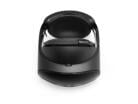
VR Cover Accessories for Meta Quest Pro
Need a hygienic cover for the Meta Quest Pro? We have a washable Head Strap Cover made of cotton that helps absorb sweat, allowing an immersive experience without the discomfort of drips.
VR Cover Accessories for Other Headsets
We have products specially designed for HTC Vive and Value Index. Purchase these accessories at our original store.
Regardless if you’re a parent, an aunt, an uncle, or a guardian, you have the power to ensure your kids enjoy a safe and fun-filled experience on Roblox. This can be achieved by activating the privacy settings and imparting valuable lessons on online safety. And with the right accessories, their VR experience can be comfortable and hygienic too. Here’s to happy and safe gaming!
Quest 2 vs Quest 3: Upgrade or Stick with the Old?
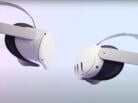
Quest 2 vs Quest 3: Upgrade or Stick with the Old?
Welcome to the ultimate face-off: Quest 2 vs Quest 3! If you’re a proud owner of a Quest 2, you might be wondering if it’s time to part ways with your trusty sidekick and buy a shiny new Quest 3 when it launches in fall. The estimated release date is anticipated to be on September 27, 2023, at Meta Connect.
Or perhaps you’re new to the VR world, standing at the crossroads, trying to decide which headset to invite into your life. To help you make an informed decision, we’ll cover the key enhancements that the Meta Quest 3 offers over the Meta / Oculus Quest 2. So, let’s delve into the details!
Quest 2 vs Quest 3: The Price Factor
Price is often a decisive factor when it comes to buying a new product. The Meta Quest 3 is priced at $499 for the 128GB model, a $200 increase compared to its predecessor with the same storage. But it’s much cheaper than the $3,500 Apple Vision Pro. The Quest 2, with 256GB, sells for $429, and the 128GB model is now $299 since June.
Although the Quest 3 comes with a higher price tag than the Quest 2, it does offer a host of new hardware and features. So while the Quest 3 might require a bigger investment, it also promises a bigger return in terms of performance and user experience.
Meta Quest 2 Specs vs Meta Quest 3 Specs
| QUEST 2 SPECS | QUEST 3 SPECS | |
| Processor | Qualcomm Snapdragon XR2 | Qualcomm Snapdragon XR2 Gen 2 |
| Display type | LCD | LCD |
| Resolution per eye | 1832 x 1920 | 2064 × 2208 |
| Refresh rate | 60, 72, 90 Hz supported | 90Hz, 120Hz (pending update) |
| Field of view (FOV) | roughly 90-100 degrees | 110 degrees (horizontal), 96 degrees (vertical) |
| Storage | 128GB & 256GB | 128GB, 512GB |
| RAM | 6 GB | 8 GB |
| Battery life | 2 – 3 hours | 2 – 3 hours |
| Size | 7.5 x 4 x 5.2 inches | 40% slimmer than Quest 2 |
| Weight | 1.1 pounds | 515 grams |
| Mixed reality passthrough | Black & white passthrough | Full color passthrough |
Quest 2 vs Quest 3: Performance
While the full details of the Meta Quest 3 specs remain undisclosed (the specs listed above have been updated since its release on 10 October 2023), it is confirmed that the Quest 3 will use a Qualcomm chipset, potentially the Snapdragon XR2+ or newer. This will enhance the speed of navigating the interface and launching apps. Gaming on the Quest 3 will also feel faster than on the Quest 2. Meta claims that the Quest 3 will deliver “twice the graphical performance” of the Quest 2’s Snapdragon XR2. This means VR on the Quest 3 will appear more detailed and realistic.
Quest 2 vs Quest 3: Displays
While the Quest 2’s display is decent, other headsets offer superior visual quality. For instance, the PSVR2 boasts two 4K OLED displays. The Quest 2 offers a resolution of 1832 x 1920 per eye, on par with the Meta Quest Pro. Although the specific screen specifications of the Quest 3 have not yet been officially announced, Meta has mentioned that the Quest 3 combines their highest resolution display with pancake optics, which will result in content that looks better than ever.
The Quest 3 is also rumored to have an improved field of view (FOV) compared to the Quest 2. The Quest 3’s higher resolution display and pancake optics, plus an improved FOV, should make for a more immersive experience. Its LCD display has about 30% more resolution than the Quest 2 as described on Best Buy, which translates to 4,128 x 2,208 pixels in total, or 2,064 x 2,208 pixels for each eye.
Quest 2 vs Quest 3: Mixed Reality Features
The Quest 2 and Quest 3 differ significantly in their mixed reality capabilities. While the Quest 2 offers basic location tracking through its black and white video Passthrough, the Quest 3 takes mixed reality to the next level. It has two 4MP RGB color Passthrough cameras on its front visor that will deliver 10x the Passthrough resolution of Quest 2. This means you’ll get more accurate colors and a lifelike view of the surrounding environment.
The Quest 3 also introduces a first-of-its-kind depth sensor on the front. This sensor helps the Smart Guardian system map your room automatically. This means virtual and real objects can interact more realistically. For example, a virtual ball will bounce off real objects that you’ve marked out in VR, just like a real ball would.
Quest 2 vs Quest 3: Design
The design of the Quest 3 is a noticeable departure from the Quest 2. (See what is looks like in a leaked, unboxing video!) Slimmer and more streamlined, its small-form factor is made possible by the use of pancake optics. The front of the headset is adorned with three pill-shaped compartments that house the camera and sensor array, along with two extra tracking cameras on the lower sides.
The Quest 3’s revamped design also includes a wheel for adjusting the lens distance, allowing users to customize the interpupillary distance (IPD). Although it will retain a USB-C port and a 3.5mm audio port, their positions have been changed, which means some Quest 2 accessories will not be compatible with the new model, such as the Quest 2 Elite Strap. In fact, a Reddit post has suggested that a Meta Quest 3 Elite Strap with Battery will be made available soon.
Quest 2 vs Quest 3: Controllers
The Quest 3 will feature Meta’s newly designed Touch Plus controllers. These controllers are not only sleeker and more comfortable to hold, but they also provide enhanced haptic feedback for a more immersive experience.
Unlike the Quest 2’s Touch controllers, which have IR LED rings, or the self-tracking Touch Pro controllers, which have cameras, the Touch Plus controllers lack these features. Instead, they will have a full-body LED layout. This design, combined with the depth sensor, gives more precise controller-free hand tracking.
Quest 2 vs Quest 3: Battery Life
The Quest 2’s battery usually holds a charge for about 2 to 3 hours, but heavy gaming can shorten this duration. As per Meta’s CTO Andrew Bosworth’s comments in a Q&A session, we can anticipate a similar battery lifespan for the Quest 3. However, the Quest 3 will have a new Snapdragon chipset that’s designed for better heat management, which could potentially prolong battery life and allow for extended gaming sessions without the concern of overheating.
Quest 2 vs Quest 3: Games
The Quest 3 is backward-compatible with the entire Quest 2 game library, with over 500 games available. There aren’t any games exclusive to the new headset. Yet, its advanced features might inspire developers to create unique games for it.
For the time being, both the Quest 3 and Quest 2 can run the same games. And Quest 2 users can rest assured that they won’t miss out on performance enhancements too. A recent software update will boost the GPU and CPU processing and create smoother gameplay.
Quest 2 vs Quest 3: Comfort
Meta has revealed that the visor of the Quest 3 is 40% slimmer than the Quest 2’s. Even so, it maintains a similar overall weight, as confirmed by the company’s CTO. And like the Quest 2, the Quest 3 comes with a fabric head strap except that it is Y-shaped. We think this should give a better fit and weight distribution.
Interestingly, a Twitter profile photo from Meta’s ‘VP Metaverse Experience’, Jason Rubin, hints at a possible Elite Strap upgrade. As with the Quest 2, Quest 3 users may have the option to replace the standard strap with a sturdier alternative.
Quest 2 vs Quest 3: Which is better for you?
While the Quest 2 remains a solid choice for a VR headset, the Meta Quest 3 specs offer clear improvements. If you want a VR headset that smoothly merges virtual and real experiences, the Quest 3 is the way to go. This becomes more evident as apps and games embrace its full mixed-reality potential.
Quest 2 VR Accessories from VR Cover
Looking to level up your Quest 2 VR experience? We’ve got just the thing – our VR Cover accessories! They’re designed with your comfort and hygiene in mind. Our range includes washable cotton VR covers, easy-to-clean PU leather foam replacement and facial interface sets, glasses spacers and more. Take a look at these Quest 2 add-ons available at our online stores:
- North America store
- Europe store
- Worldwide store (for other destinations)
How to Put the Glasses Spacer on Meta / Oculus Quest 2
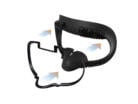
How to Put the Glasses Spacer on the Meta / Oculus Quest 2: A Guide for the Bespectacled
Welcome, fellow glasses-wearers! If you’ve ever wondered how to navigate the VR world without squashing your glasses or scratching the headset lens, you’ve come to the right place. Among other things, we’ll discuss how to put the glasses spacer on the Meta / Oculus Quest 2 and how to wear your headset. Let’s dive in, glasses first!
Why Glasses in VR?
You might ask why you would still need glasses in VR when the headset lens are so close. Well, VR headsets use lenses to project images at a distance, just like real life. So, if you’re nearsighted, you’ll still need your glasses. Also, VR doesn’t offer the same range of focus adjustment as reality, and without your glasses, you might experience blurry peripheral vision. There are other reasons too why glasses are necessary.
Limited accommodation in VR
In the real world, our eyes have the ability to change focus by adjusting the shape of the lenses inside them, a process known as accommodation. This allows us to focus on objects at varying distances. However, in VR, the screen distance is fixed, and the eyes don’t have the same range of accommodation as they would in the real world. This can make it difficult for people with myopia to adjust their focus adequately without their glasses.
Peripheral vision and eye strain
VR headsets typically have a wide field of view to enhance the immersive experience. Without wearing their prescription glasses, myopic individuals might experience blur or visual distortions in their peripheral vision. This can lead to eye strain and discomfort during prolonged VR use.
To address these issues, some VR headsets offer adjustment options for the distance between the lenses and the eyes (interpupillary distance) to accommodate different users, including those with myopia. However, this adjustment may not fully compensate for individual prescription needs, especially if the myopia is severe.
In some cases, people with mild myopia might find that they can use a VR headset without their glasses and still see the virtual content reasonably well. For those with moderate to severe myopia, wearing prescription glasses or using contact lenses while using a VR headset will generally provide the best and clearest viewing experience.
Maintaining a Safe Distance: Glasses and the Headset Lens
To prevent your glasses from scratching the headset lens, maintain a small gap of a few millimeters between them. Meta’s own glasses spacer adds a 4mm gap for this purpose.
Do Oculus Glasses Spacers Work?
Glasses spacers work well as long as your glasses fall within Meta’s recommended dimensions. If your glasses are thicker or wider than the given recommendations, they might not fit well inside the headset or could bump against the headset lens, even with the spacer installed.

How to Put the Glasses Spacer on the Meta Quest 2
To install the glasses spacer, follow these steps:
- Remove the foam interface. Start by tugging at the top part of the facial interface. It’s held in place by two nubs that might feel tighter than your jeans at Thanksgiving, but don’t worry. Apply a bit more force and it will come off. Repeat with the bottom portion.
- Once the face gasket is removed, install the glasses spacer. Position it correctly over the headset and push in at the two nubs near the nose section and the top.
- Reinsert the facial interface. Push in the two nubs at the bottom first, then the top two nubs.

VR Cover Facial Interface Spacer: Your Glasses’ Best Friend
Our Oculus Quest 2 glasses spacer replacement offers a more comfortable fit by adding 4.3mm of space before the display. This extra room reduces the potential of the lens being scratched, ensuring a better VR experience.
XL Spacer for Meta / Oculus Quest 2: More Room, More Comfort
For the best Quest 2 spacer that gives even more room, consider our XL Spacer. Compatible with the original facial interface on the headset and the VR Cover Fitness Facial Interface only, it adds 6.5mm of space, providing the clearance needed to reduce the potential of your glasses bumping up against the lens.
How to Use the VR Cover Glasses Spacers
The installation process for our glasses spacers is similar to Meta’s:
- Remove the stock facial interface.
- Position the spacer correctly over where the nubs will go.
- Press in the two bottom nubs first and then the top nubs.
- Install our facial interface and foam replacement.
Our spacers work with specific facial interface versions. Check the compatibility before you purchase.
- VR Cover Facial Interface Spacer for Meta / Oculus Quest 2 works with the VR Cover Facial Interface and Foam Replacement only. Watch the installation video.
- XL Spacer for Meta / Oculus Quest 2 works with the VR Cover Fitness Facial Interface and Foam Replacement, as well as the stock facial interface. Watch the installation video.
Wearing the Meta / Oculus Quest 2 with Glasses: A Comfortable Fit
Wearing glasses with your VR headset can feel like trying to fit a square peg in a round hole. But don’t worry, we’ve got a trick up our sleeve:
- Press the headset against your face first.
- Pull the strap over your head.
- Gently push forward the frames of your glasses – nudge the frames resting just above your ears.
Voila! This technique moves your glasses slightly towards the lens display and relieves some of that pressure on your face.
Now that you know how to wear your glasses safely with the Oculus Quest 2, you can truly enjoy VR without worry.
PSVR2 News: Play Beat Saber on PSVR2

Play Beat Saber on PSVR2: Why It’s the Best VR Experience Yet
Beat Saber, with its irresistible block-slashing fun, has become a must-have in anyone’s game collection. When you play Beat Saber on PSVR2, you’re not just playing a game – you’re immersing yourself in a performance that has been enhanced for this version. And the best part? If you’re already a proud owner of the title on PSVR, you can upgrade to the PSVR2 version absolutely free.
Beat Saber: The Uncontested Champion of VR Downloads
In May and June 2023, Beat Saber reigned supreme on the PlayStation VR2 download charts across the US, Canada, and Europe. This impressive feat was achieved despite a delayed release in May, and its success can be attributed to a number of reasons.
Seamless Transition for Existing Owners: No Need to Break the Bank
For starters, if you already own the PlayStation VR1 version of Beat Saber, you’re in luck. The cross-buy feature ensures that you automatically qualify for the PlayStation VR2 version. Boot up your PS5 to receive a notification about the availability of the new version. Just download it and you’re all set to run it on the PSVR2. What’s more, any music packs you previously purchased on PSVR will be transferred over at no additional cost.
Intuitive Gameplay: So Easy, Your Grandma Could Play
While mastering the basics of this game will take time and practice, Beat Saber offers an easy-to-grasp gameplay that welcomes players of all ages and skill levels. The premise is straightforward: wield your lightsabers to slice through blocks in the right direction, all in sync with the pulsating music to rack up points. The controllers provide haptic feedback when you nail the hits, adding to the immersive experience. On the PlayStation VR2, the tracking feels smooth and lag-free. You’ll be channeling your inner Jedi before you know it.
Immersive Environment and Instant Rewards
Beat Saber’s environment is a masterclass in simplicity meeting style. Imagine stepping into a futuristic music video, where complex geometric shapes, a darkened arena, and glowing lighting effects come together to create a visually stunning backdrop. The environment, paired with the music, is designed to keep your focus razor-sharp. Each cube you slice rewards you with immediate visual, auditory, and tactile feedback, delivering a rush of gratification that keeps you coming back for more. With the PSVR2 version, the visuals take a leap forward, looking even more crisp and vibrant.
Music and Difficulty Levels: There’s Something for Everyone
Beat Saber is immensely enjoyable, whether you’re a newbie or a seasoned pro. With a variety of music and scalable difficulty levels, you’ll never get bored. Plus, their ever-expanding music packs feature great tracks from the likes of Queen, The Weeknd, Lady Gaga and more. Who knew getting fit could be this fun?
No Motion Sickness: A Smooth Ride All the Way
Unlike some VR games, Beat Saber doesn’t induce motion sickness. So you can play to your heart’s content without worrying about turning green.
A Fun Workout: Sweat It Out with Beat Saber
Playing Beat Saber isn’t just a blast – it can also double up as a solid workout, particularly at higher difficulty levels. But don’t let the fear of sweat dampen your gaming spirit. We’ve got you covered with our Head Strap Cover Set for PlayStation VR2.
This set includes a support head strap and a pair of washable cotton VR covers. The adjustable strap helps to distribute the headset’s weight across your head for more comfort while the absorbent covers fit over the front and back foam cushions on the headband, becoming your first line of defense against sweat during those intense gaming sessions.

Once you’ve conquered the rhythm-filled universe of Beat Saber, a host of other exhilarating titles await you on the PSVR2, including Synth Riders and Pistol Whip. Whether you’re drawn to the thrill of nonstop action, the beat of thumping music, the daily dose of exercise, or the sheer joy of slicing and dicing, there’s a game out there ready to captivate you. So, what are you waiting for? Grab those controllers and let’s get slashing.
Meta Quest Pro User Reviews
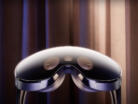
Meta Quest Pro User Reviews
Since its launch on October 25, 2022, the Meta Quest Pro has journeyed through a whirlwind of mixed reviews, a price reduction, and a delayed successor, the Quest Pro 2. This article dives into the heart of user experiences shared on Reddit, exploring the device’s visual prowess, performance, comfort, and design. We’ll also touch on the applications, its value for money, and what the users hope to see improved for Meta’s most advanced headset yet.
Visual Quality and Performance: User Perspectives
Pancake Lenses
Users are generally impressed with the Meta Quest Pro’s visuals. The switch to pancake optics from the Quest 2’s Fresnel lenses has significantly enhanced clarity, reduced blurriness and improved peripheral vision. Its expansive 106° field of view (FOV), which remains unaffected by lens separation, further enriches the immersion.
When using software like Immersed or Workrooms, the Quest Pro beats the Quest 2. Text is crisp, and with the edge-to-edge lens clarity, reading is easy. There’s no headache or eye strain. While it might not be as sharp as a regular monitor, it’s a great substitute for extended use if you’re working with a smaller laptop screen.
Best All-round PCVR Headset
The Meta Quest Pro also really shines as a PCVR headset, especially now that it supports WiFi 6E. If you have a router that’s compatible and a fast enough internet connection, your headset can reach speeds up to 1.6Gbps. This translates to a smooth experience without noticeable latency.
Face and Eye Tracking
On the other hand, there are users who have expressed disappointment over the absence of built-in eye or face tracking support in PCVR. Another issue is the lack of high-quality applications that make the most of its mixed-reality capabilities.
Color Passthrough
Several reviews noted that the color passthrough falls short of accurately replicating reality. The video is blurry, struggles with different light levels, and colors can be intense. Reading screens through it is tough. It’s okay for quick tasks, but it’s not much better than the Quest 2’s simpler passthrough.
Comfort and Design: A Matter of Personal Preference
User opinions on comfort of the device vary. Many appreciate that the Quest Pro isn’t strapped to the face since there is no facial interface by default. Some find it comfortable for extended use, while others find the halo strap design uncomfortable. A frequent gripe is the non-adjustable battery and strap at the back. However, some users have found creative ways to increase comfort, such as wearing a baseball cap under the headset or using a different top strap.
If sweat and hygiene are a concern for you, the Head Strap Cover for Meta Quest Pro is an excellent add-on to consider. This cotton VR cover conveniently fits over the front foam of the headset, effectively absorbing sweat during your workouts. Regarded as one of the best accessories for the Meta Quest Pro on the market, these soft, washable covers ensure a more comfortable VR experience.

Controllers and Tracking
The Meta Quest Pro controllers are appreciated for their accurate tracking and haptic feedback. They are comfortable to hold despite being heavier than Quest 2 controllers.
Unlike the Quest 2 controllers, there’s no need for halo ring guards (like the Quest 2 Halo Controller Protector) since the Quest Pro controllers lack tracking rings. This design eliminates the problem of controller collisions during gaming or accidentally hitting the headset while reaching for objects.
Some users have reported issues with the controllers being sluggish to respond in certain games. Like the face and eye tracking technology, the haptics and pinch sensor features are not widely utilized due to the limited number of apps that support them.
Applications and Use Cases: Gaming and Beyond
Many see the Meta Quest Pro as a promising VR headset for both gaming and work. Apps like Red Matter 2, Eleven Table Tennis and Horizons World, to name a few, are amazing on the Quest Pro. And watching movies is a joy, thanks to the wide FOV, local dimming for deep blacks, QLED color reproduction, and clarity. The movies are HD quality, especially when streamed from the PC. Lying back with the headset may, however, be uncomfortable for some people due to the back battery.
Price and Value: Is the Meta Quest Pro Worth It?
Even though the Meta Quest Pro costs more than Meta Quest 2, many users think the better features and performance make it worth the price. Both the Quest Pro and Quest 2 saw a price drop in March this year, as Meta aims to make them more affordable. Several individuals are adopting a ‘wait and see’ approach, anticipating more price reductions, particularly considering the competition from other VR headsets such as the HTC Vive XR Elite.
Prices of the headsets
Meta Quest Pro – USD$999.99
Meta Quest 2 – USD$429.99 (256GB), USD$399.99 (128GB)
Future Expectations: The Quest Pro’s Potential
Many people would like to see more use of the Quest Pro’s cool features like local dimming and eye-tracked rendering. There’s also anticipation for a potential Quest Pro 2 in a few years’ time, which could further improve on the current model’s features.
Meta Quest 3 Specs, Price and Release Date
Meta Quest 3 Specs, Price and Release Date
Official Announcement
Mark Zuckerberg, the CEO of Meta, offered a sneak peek of the company’s newest virtual reality headset, the Meta Quest 3, on June 1st. In an Instagram caption and video, Zuckerberg revealed that the starting price for the new headset would be $499. More details will be announced on September 27 at their Connect conference. As the date draws close, there is a lot of speculation about the Meta Quest 3 specs and what else might be in store. Here, we share all the information we know so far.
Meta Quest 3 Specs: Summary
The upcoming Meta Quest 3 VR headset will feature a base storage of 128GB, optional higher storage variants (256GB or 512G), and a next-gen Qualcomm Snapdragon chip for doubled graphics performance. Boasting nearly a 30% resolution increase from its predecessor, as described on Best Buy, it may offer up to 4,128 by 2,208 pixels and a 120Hz refresh rate. While it includes high-fidelity color passthrough for mixed reality experiences, it lacks the eye-tracking tech on the Meta Quest Pro. It’s expected to have a 2-hour battery life similar to the Oculus Quest 2. (Quest 2 vs Quest 3 Specs: How they compare)
| Meta Quest 3 Specs (updated on 10 October 2023) | |
|---|---|
| Price | $499 (128GB), $649 (512GB) |
| Release date | October 10, 2023 |
| Processor | Qualcomm Snapdragon XR2 Gen 2 |
| Display type | 4K+ Infinite Display |
| Resolution per eye | 2064 x 2208 pixels |
| Refresh rate | 90Hz, 120Hz (pending update) |
| Field of view (FOV) | 110 degrees (horizontal), 96 degrees (vertical) |
| Storage | 128GB, 512GB |
| RAM | 8GB |
| Battery life | 2 – 3 hours |
| Size | 40% slimmer than Quest 2 |
| Weight | 515 grams |
| Mixed reality passthrough | Full color passthrough |
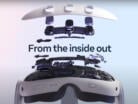
Next-Generation Qualcomm Snapdragon Chip
According to those in the know, the Quest 3 is powered by the Qualcomm Snapdragon XR2 Gen 2 chipset which offers twice the graphical performance of the Quest 2. With this robust processor, VR gamers can look forward to smooth, lag-free experiences.
Storage capacity starts at 128GB. There will be extra storage options available for those desiring more space.
The Display
Zuckerberg’s post highlighted that the Quest 3 will be “the first mainstream headset with high-res color mixed reality.” Speculation suggests that the Quest 3 might feature a resolution of either 4,128 x 2,208 pixels or 2,064 x 2,208 pixels per eye. This would represent a 30% enhancement compared to the Quest 2’s resolution of 1,832 x 1,920 pixels per eye. The refresh rate remains undisclosed at this point, but there’s an expectation that the headset will support a 120Hz refresh rate.
Full-Color Passthrough and Depth Sensing
The Quest 3, like the Quest Pro, boasts a full-color Passthrough that offers ten times more pixels than the Quest 2, according to Meta. It will come equipped with two RGB cameras for capturing color information in 3D. Its depth sensor will also offer more accurate distance measurements, helping the system determine how far each part of the scene should be rendered.
Design and User Comfort Enhancements
The Meta Quest 3 is 40% slimmer than the Quest 2. This reduced size not only lends it a more refined look but also improves user comfort. The front has a trio of pill-shaped cameras or sensors while the head strap appears to be made of a high-quality flexible material.
The headset also comes equipped with a USB-C port, volume control, an IPD adjustment wheel, and a power button. An improved face shield is likely to offer better light blocking capabilities.
Touch Plus Controllers
Its Touch Plus controllers are designed with ergonomics in mind, aiming to feel like a seamless extension of the user’s hands while also minimizing their physical space requirement. They can be swapped with the Quest Pro’s Touch Pro controllers if desired.
One of the key features of these controllers is the incorporation of TruTouch haptics to enhance the immersive experience. A notable change is the absence of outer tracking or halo rings on the controllers. However, the continued reliance on disposable AA batteries may dismay some users.
Unique Features of Meta Quest 3
The Smart Guardian System
Leaked videos have hinted at a major improvement to the Smart Guardian feature. Instead of just using the controller, the Quest 3’s cameras and depth sensor would map the room, creating a safe VR zone and allowing accurate interaction with real-world objects.
The VR Subscription Service: Quest+
Meta has also introduced a VR subscription service, Meta Quest+. Priced at $7.99 monthly or $59.99 annually, it offers subscribers two new games each month. This strategy aims to enrich existing Quest users’ game libraries in anticipation of the Quest 3 launch. The service could help users explore new titles without full-price commitments. The inaugural titles are Pixel Ripped 1995 and Pistol Whip.
Meta Quest 3 Release Date: When is Meta Quest 3 Coming Out?
The headset is scheduled for release this fall. It’s possible the release date will be on September 27. Alternatively, pre-orders might start around that time and the official release could happen shortly afterwards. Considering that the Quest 2 was launched on October 13, 2020, it would be reasonable to expect the Quest 3 to also have an October release.
The fall release positions the headset perfectly for the holiday season, potentially driving significant sales as consumers look for the latest tech gifts.
Meta Quest 3 Price
The Meta Quest 3 will start at $499 for the 128GB version. This is $200 more than the Quest 2. The price hike is likely attributed to the use of better technology and hardware. However, when compared with competitors’ HMDs like the PlayStation VR2, which costs $549 plus an additional $500 for the gaming console, Meta’s pricing strategy remains competitive. This demonstrates Meta’s dedication to making high-quality VR experiences accessible to a wider audience.

Final Thoughts on the Meta Quest 3 Release
Despite its premium price, the Meta Quest 3, with its sleek design, full-color passthrough, new chipset, and exclusive features, represents a significant step forward in Mixed Reality. It promises notable improvements over its predecessor and, with a growing VR game library, could be the perfect pick for new virtual reality enthusiasts this fall.
Musk vs. Zuckerberg Cage Match: Get Fight-Ready in VR

Step into VR and train with top fighting games and VR Cover accessories for Musk vs. Zuckerberg cage match-inspired action!
The Unexpected Challenge: Musk vs. Zuckerberg Cage Match
In a plot twist that could only happen in the tech world, Elon Musk and Mark Zuckerberg are trading algorithms for arm bars, promising a cage match that’s sure to have more hits than their social media platforms.
As people eagerly anticipate this billionaire showdown, we find ourselves intrigued by the training possibilities in VR. There are many VR fighting games that deliver intense mixed martial arts action, mimicking real-life combat but without the bruises. Here, we’ve compiled some of the most exciting titles on Quest 2. Prepare to dive into these virtual worlds and unleash a whole new level of fighting prowess within you!
Top VR Fighting Games
Creed: Rise to Glory
Inspired by the popular Rocky franchise, ‘Creed: Rise to Glory’ is a knockout blend of cinematic drama and high-stakes fights. You train under Rocky Balboa and battle diverse opponents. The primary mechanics center on shadowboxing, incorporating actions like punching, dodging, and blocking. The Championship Edition enhances this journey with added content, appealing features, and improved user experience.
Thrill of the Fight
‘Thrill of the Fight’ stands out in VR combat training, focusing on realism over game-like features. Reviews on YouTube applaud its authentic feel and ability to teach key boxing skills. Every swing, every dodge counts. Paired with real-life training, the game can gradually enhance your boxing prowess.
Sairento VR: Untethered
Those seeking a more fantastical approach will enjoy Sairento VR’s cyber ninja adventure. Defy gravity as you execute quadruple jumps, scale walls and perform backflips. There is an impressive arsenal of weapons at your disposal to dispatch enemies with. The immersive gameplay drives you to push your limits and ascend to new heights of skill and achievement.
Until You Fall
‘Until You Fall’ combines elements of fantasy RPGs with rigorous melee combat. You fight in a neon-lit world, synced to a synthwave beat. Your physical movements dictate your actions and your journey takes you into a realm rife with monstrous creatures. An array of one- and two-handed weapons add a strategic layer to gameplay.
Ironlights
‘Ironlights’ brings a fresh perspective to VR fighting games. Its slow-motion hand-to-hand combat requires strategy and precision. Master intricate swordplay, where every weapon shatters on impact, necessitating a reload swing to continue the fight. The emphasis here is not just on swinging swords wildly, but also on the art of parrying and maneuvering around defenses. Honestly, it’s quite a cerebral workout.
Essential VR Cover Accessories for Intense Workouts
For those planning to break a sweat in VR, accessories from VR Cover are indispensable. Check out our recommended products that enhance comfort, improve hygiene, and prolong VR sessions.

Fitness Facial Interface and Foam Replacement for Meta Quest 2
Workouts can get intense. That’s why the Fitness Facial Interface is equipped with multiple passive air vents to reduce moisture build-up and prevent any pesky lens fogging. It’s ergonomically shaped and made of a flexible material to fit various face shapes comfortably. The set comes with two sweat-resistant, easy-to-clean PU leather foams, a light-blocking nose guard and a handy lens cover.
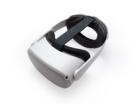
Elite Headstrap Foam Pad for Meta Quest 2
Tired of those sneaky pressure points cramping your gaming style? This one-piece foam cushion attaches to the Elite head strap and offers a soft landing pad for the back of the head. The extra layer also gives your headset a snug hold, enhancing stability during those active gaming moments.
Silicone Cover for Meta Quest 2
Say goodbye to sweaty foam troubles. Designed to fit over the original foam, our washable Quest 2 Silicone Cover is great at keeping sweat off. It’s made of medical grade silicone that is hypoallergenic and soft. During vigorous activities, it grips gently, ensuring minimal headset movement.
VR Cover for Meta Quest 2
These 100% cotton covers enhance your comfort by rapidly absorbing sweat. Not only do they reduce drips, they also shield the foam from dirt and loose hair. As they are machine-washable, they offer an easy way to maintain headset hygiene.
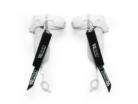
Controller Grips for Meta Quest 2
Add these grips to the controllers so that you can let go of them without worry. With adjustable knuckle straps to keep the controllers safely attached to you and non-slip sleeves to give superior handling, you’ll have the freedom to execute a wider range of hand movements.
Halo Controller Protector for Meta Quest 2
When you’re in the heat of battle and swinging your controllers combat-style, you would want to safeguard them from knocks and scratches. These handy protectors provide a buffer for the halo rings. They also feature large holes, so the tracking is not affected.
Buy accessories for Meta Quest 2, HP Reverb G2, PICO 4 and PlayStation VR2 at these stores:
- North America Store
- Europe Store
- Worldwide Store (other destinations)
Buy accessories for other headsets at this store:
First Impressions and Key Features of Apple Vision Pro
First Impressions and Key Features of Apple Vision Pro
On Monday, 5 June 2023, Apple unwrapped its latest showstopper, the Apple Vision Pro. The much-awaited AR/VR headset is set to go public only in early 2024, but a select group of lucky ducks from the media and YouTube community have already had a sneak peek at this potential game-changer. Here’s the lowdown on their first impressions of Apple Vision Pro.
Initial Set-Up: Customizable Comfort
When it came to getting Vision Pro up and running, everyone seemed to agree it was easy and straightforward. The Light Seal, a comfy fabric lining that sits between your eyes and the headset, can be tailor-fitted to individuals. Much like setting up Face ID, the testers went through a quick face scan on an iPhone in order to receive the right size Light Seal. Although this customized approach is great, it means your Vision Pro may not be easily shareable between different people in a household. But hey, maybe that’s a good excuse to get one for each family member, right?
Those who wore prescription glasses had specially designed, snap-in lens inserts after their eye prescription was taken. Other comfort-enhancing features include the Fit Dial, which allows for precision adjustments of the Head Strap, and an optional top strap to help ease pressure.
The headset itself is a lightweight champ at around 450g. It feels pretty good on your head, but don’t expect to Netflix and chill all day without feeling it.
Intuitive Eye Tracking and Gesture Control
The eye tracking and gesture control wowed everyone. Before they could use the headset, they had to look around at various dots on the display. What this process does is allow the software to learn and calibrate according to the movements of the eyes. Once the system has had a once-over with your eyes, you just have to look at something on the display to highlight it.
The intuitive UI experience extends to the fingers. Pinching with the fingers simulates a mouse click to select items, while pushing or pulling motions mimic the scrolling function. The testers noted that the headset’s array of sensors was able to keep track of the gestures flawlessly, whether their hands were resting on their legs or were moving about.
Merging Real and Virtual Worlds: Low-Latency Video Passthrough
Vision Pro’s advanced display and cameras gave the testers a crystal clear view of the real world, setting it apart from the grainy visuals of other headsets. They found that they could effortlessly read their watch, converse with others, and stroll around the room without removing the headset. Even jotting down notes on their phones was possible.
They used the Digital Crown to toggle between VR and AR experiences. With a simple spin, the level of immersion could be adjusted. The mid-way setting offers you a workspace-like experience – you can engage in live chat with colleagues and access a virtual desktop with apps at the same time. While switching from VR to AR led to a few wobbly knees and instances of detail loss, overall, the testers found the video passthrough impressive.

Like Being in the Movie: Next-Level 3D and Cinema Experience
A 3D version of Avatar: Way of Water was sampled. Many people felt that the characters literally popped right out from the micro-OLED displays.
There is a Cinema Environment feature that is designed to make the whole thing feel even more like a big-screen experience. Apple also gave a glimpse of the upcoming Immersive Video format that’s set to launch on their Apple TV Plus service. This isn’t your typical video format – we’re talking a wide-spanning 180-degree view that packs some seriously high-quality resolution and video clarity. Two sports events were shown at the demo and all marveled at the incredible definition and close-up perspective they witnessed.
But Vision Pro doesn’t stop at just watching stuff. Though the feature was not available to the testers, 3D photos and videos can be captured, say at a birthday party, though you would have to wear the headset to record those moments.
Gaming is also set to be a treat, particularly with its compatibility with Apple Arcade. Coupled with the headset’s game controller support, it seems we’re in for a variety of immersive experiences.
Groundbreaking Apps: A New World of Mixed Reality
Experimenting with third-party applications, the testers recognized an expansive opportunity for developers to exploit the power of Apple’s M2 and R1 chips. These chips, capable of fast real-time data processing, could unlock groundbreaking AR experiences. Among the apps played was ‘Mindfulness’, an application designed to foster relaxation through voice-guided meditation paired with stunning visuals. Also catching the testers’ attention was ‘Encounter Dinosaurs’, a playful app that engages users in interactions with responsive virtual creatures.
Hyper-Realistic Avatars on FaceTime
FaceTime gets a revamp with Vision Pro. The testers were able to have a FaceTime chat with Apple employees and see their 3D holograms. These are hyper-realistic avatars that can be created by scanning one’s face using the headset’s “advanced encoder-decoder neural network” that is trained on a diverse dataset of thousands of individuals. The result is a digital persona that can mimic the user’s facial and hand movements during a FaceTime call. While the effectiveness of this feature is still to be evaluated in uncontrolled settings, it offers a unique solution for using FaceTime without needing a camera directed at one’s face.
Wrapping it Up: The Takeaway
Most of the testers certainly found Vision Pro to be unrivaled in terms of its user-friendly features and immersive capabilities. They particularly praised the superior video passthrough experience, pin-sharp graphics and the seamless navigation of the interface. Sure, it comes with a hefty price tag of US$3,500 (though rumors hint at a more wallet-friendly version on the horizon) and yes, there might be a learning curve in fitting it into our work or play routines. Still, the consensus remains – Apple’s concept of “spatial computing”, which blends the digital seamlessly into our real-world surroundings, genuinely feels like it could be the next big evolution in tech.
WWDC 2023 Recap: Unpacking the Announcements around Apple Vision Pro
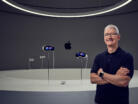
WWDC 2023 Recap: Unpacking the Announcements around Apple Vision Pro
Introduction
The Highlight: Apple Vision Pro
In June 2023, the tech world experienced a groundbreaking event during Apple’s annual Worldwide Developers Conference (WWDC) with the unveiling of Apple Vision Pro. Apple’s CEO, Tim Cook, declared it as “an entirely new AR platform.” Described as a “revolutionary spatial computer,” this remarkable device holds the power to change how we experience and engage with the world around us.
This release is significant as it marks Apple’s first major product introduction since the Apple Watch in 2015, and it is poised to change the landscape of augmented reality (AR).
Understanding Augmented Reality
What is Augmented Reality (AR)?
Augmented Reality, or AR, amalgamates the digital world with our physical surroundings. It superimposes computer-generated images onto our view of the real world, creating a composite view that augments our reality.
The Evolution of AR Technology
AR has evolved from a conceptual technology to a robust platform for immersive experiences. Innovations have turned science fiction into reality, culminating in devices like the Apple Vision Pro.
The Journey of Apple in AR
Apple’s First Foray into AR: The Acquisition of Metaio
The genesis of Apple’s AR journey can be traced back to 2015 with the acquisition of the German AR company, Metaio. This strategic move signaled Apple’s commitment to pioneering in the realm of AR.
Notable Milestones: From ARKit to Vision Pro
Since the Metaio acquisition, Apple has made significant strides in AR, most notably with the introduction of ARKit in 2017. The launch of Vision Pro in 2023 represents the apex of Apple’s AR journey thus far.
The Design: A Work of Art and Engineering
The Look and Feel of Apple Vision Pro
Apple Vision Pro is a fusion of aesthetic elegance and functional efficiency. Envision, if you will, the most sci-fi-looking pair of ski goggles, for that is what the design is reminiscent of. Fronted by a laminated glass display that transitions smoothly into an aluminum alloy frame, the headset curves softly to the contours of your face. The Light Seal, a flexible, magnetic cushion, and a customizable headband for the back of the head, together form a modular system that creates a range of fit to accommodate different people.
The Specs: Under the Hood
Sensor Configuration, Micro-OLED Displays and Eye Tracking
Beneath its sleek exterior, it packs a hardware punch, housing five sensors, six microphones, and 12 cameras. The user views the content through two micro-OLED displays which combine to deliver an impressive 23 megapixels of visual clarity. To facilitate precise eye tracking, the device incorporates a system of LEDs and infrared cameras, forming the foundation of the iris scanner, known as Optic ID. This feature serves as an authentication method, similar to the Face ID found in iPhones.
Advanced Spatial Audio System
The device’s speaker is placed within the headband, positioned directly over the user’s ears for optimal audio clarity. It also offers virtualized surround sound, further enhancing the immersive experience.
Cutting-Edge Technology: Dual-Chip Design and Power Options
Powering this technological marvel is the Apple M2 system. It is accompanied by the Apple R1 co-processor, responsible for real-time processing of sensor inputs. As for power sources, the Vision Pro can be charged using an external power supply, a USB-C port on a Mac, or a battery pack, providing approximately two hours of usage on a single charge.
Seamless Connections with EyeSight
The Vision Pro comes with a special feature called EyeSight, which is an outward-facing display. It is a cool way to show others how much you’re “in the zone” with your headset. When you’re using it for augmented reality, your eyes on the display appear dimmed. If you’re in full immersion, your eyes are hidden. If someone comes up to you or starts talking, EyeSight switches back to showing your eyes as normal, no matter how immersed you are. This means you can see the other person, which makes it a neat balance between virtual and real-world interaction.
ZEISS Optical Lenses
Users who wear prescription glasses are catered to with the support of custom optical inserts, developed in collaboration with Carl Zeiss AG. These inserts securely affix onto the main lens through magnetic attachment.
Embracing the Future with VisionOS
VisionOS: A Derivative of iOS
One of the key features of Vision Pro is VisionOS, the operating system powering the headset. Think of it as iOS’s futuristic cousin, specially designed for extended reality software and controlled via motion gestures, eye tracking, and voice input.
Interaction with VisionOS: A Different Approach
There’s a certain nostalgia many of us have for our first iPhone experience and the initial encounter with iOS. VisionOS is set to catapult that sense of wonder into an entirely different realm, where icons defy gravity, hovering before your gaze, and simple eye contact becomes the magic touch to select them.
The VisionOS Experience
A New World of Apps and Environments
VisionOS introduces a novel way of interacting with apps, allowing you to manipulate them as if they were physical objects in your environment. Your favorite apps can be launched in a virtual window that you can move and resize at will. It sounds like something out of a sci-fi movie but that’s the reality VisionOS seeks to create.
Apple’s innovation doesn’t end with the interface; it extends to the apps and environments too. With VisionOS, users can enjoy AR-specific versions of their favorite Apple apps, like FaceTime, Safari, Photos, Music, TV, and Keynote, as well as compatible iPhone and iPad apps. Users can even manipulate 3D objects within these apps, which adds another layer of interactivity.
Third-party apps are also supported. In fact, Disney CEO Bob Iger graced the WWDC keynote with a surprise appearance to deliver exciting news: the Disney+ app will be available on Vision Pro. Users can expect immersive 3D interactive experiences from Star Wars, National Geographic, and more.
Of course, an immersive experience isn’t truly complete without a transformative environment. With VisionOS, users can overlay virtual backdrops – dubbed as “environments” – that seamlessly replace their immediate surroundings with evocative landscapes, be it the lush green of a forest or the stark, celestial beauty of lunar terrains.
In Sync with the Apple Ecosystem
VisionOS Compatibility: Interplay with Other Apple Devices
The operating system will work in harmony with other Apple hardware. You can replicate the screen of your MacBook within the headset using a feature called Mac Virtual Display, making it easy to switch between devices for work or play. For an enhanced AR experience, users can also utilize Bluetooth accessories like the Apple Magic Keyboard or gaming controllers.
Security Takes Center Stage
Introduction of Optic ID: A New Level of Security
Amid all the excitement, Apple emphasizes its dedication to maintaining user privacy. Its new technology, Optic ID, scans your iris every time you put on the headset. This feature guarantees the security of your data by storing it directly on the headset, away from the prying cloud. Access to your personal information is strictly restricted, ensuring that only you have control over it.
Conclusion
Looking Forward: The Future of Apple Vision Pro
So here we are, at the threshold of a new era. With Apple Vision Pro and VisionOS, Apple has challenged our notions of what’s possible and given us a glimpse into the future. But as with all things futuristic, it leaves us with more questions than answers. How will Apple Vision Pro alter our relationship with technology? Where will the boundaries of human-computer interaction be drawn? While it’s too early to say, one thing is certain: with Apple Vision Pro, the future of AR is a lot closer than we think and we can’t wait to see what it has in store.


